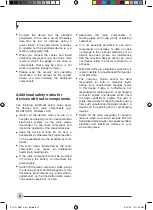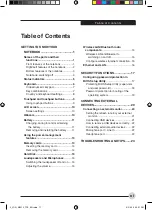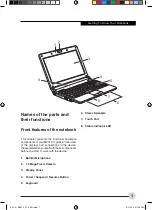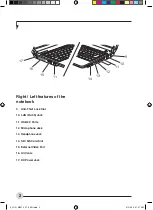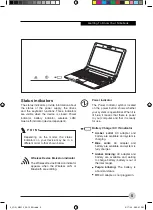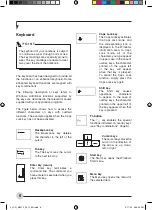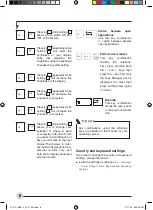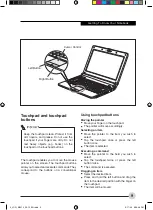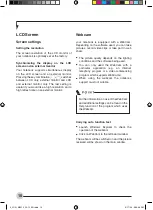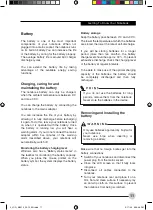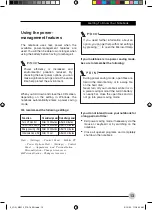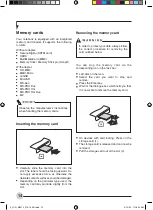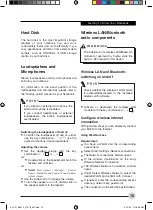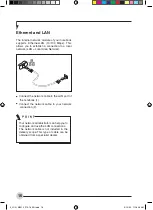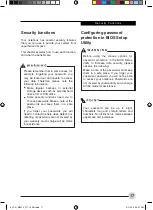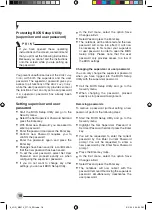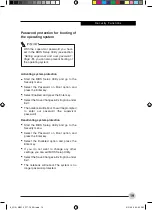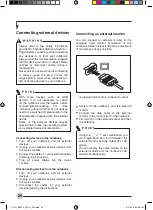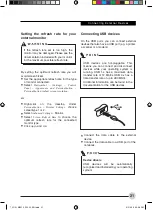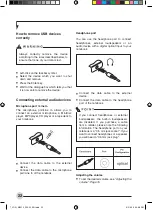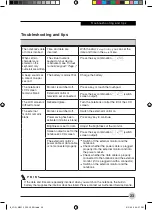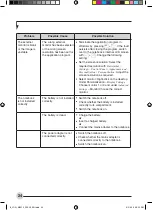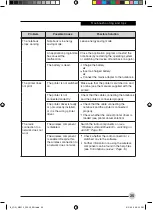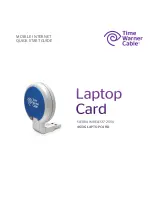
11
Getting To Know Your Notebook
Battery
The battery is one of the most important
components of your notebook. When not
plugged into a mains socket, the notebook runs
on its built-in battery. You can increase the life
of the battery by caring for the battery properly.
The average battery life is around 500 charge/
discharge cycles.
You can extend the battery life by taking
advantage of the available energy saving
functions.
Charging, caring for and
maintaining the battery
The notebook battery can only be charged,
when the ambient temperature is between 5°C
and max. 35°C.
You can charge the battery by connecting the
notebook to the mains adapter.
You can increase the life of your battery by
allowing it to fully discharge before recharging
it again. To do this, leave your notebook turned
on when it is operated with the battery. Once
the battery is running low you will hear a
warning alarm. If you do not connect the mains
adapter within five minutes of the warning
alarm described above, your notebook will
automatically switch off.
Monitoring the battery charging level
Windows also has a “Battery status meter” in
the taskbar for monitoring the battery capacity.
When you place the mouse pointer on the
battery symbol, the system displays the battery
status.
Battery storage
Keep the battery pack between 0°C and +30°C.
The lower the temperature at which the batteries
are stored, the lower the rate of self-discharge.
If you will be storing batteries for a longer
period (more than two months), the battery
charge level should be approx. 30 %. To prevent
exhaustive discharge, check the charging level
of the battery at regular intervals.
To be able to make use of the optimal charging
capacity of the batteries, the battery should
be completely discharged and then fully
recharged.
If you do not use the batteries for long
periods, remove them from the notebook.
Never store the batteries in the device.
Removing and installing the
battery
Only use batteries approved by Fujitsu for
your notebook.
Never use force when inserting or
removing a battery.
Make sure that no foreign bodies get into the
battery connections.
•
Switch off your notebook and disconnect the
power plug from the mains socket.
•
Close the LCD screen so that it fully locks
into place.
•
Disconnect all cables connected to the
notebook.
•
Turn your notebook over and place it on a
firm, flat and clean surface. If necessary, lay
an anti-slip cloth on this surface to prevent
the notebook from being scratched.
4_JOG_M2010_P4-12_EN.indd 11
3/17/09 3:33:46 PM


